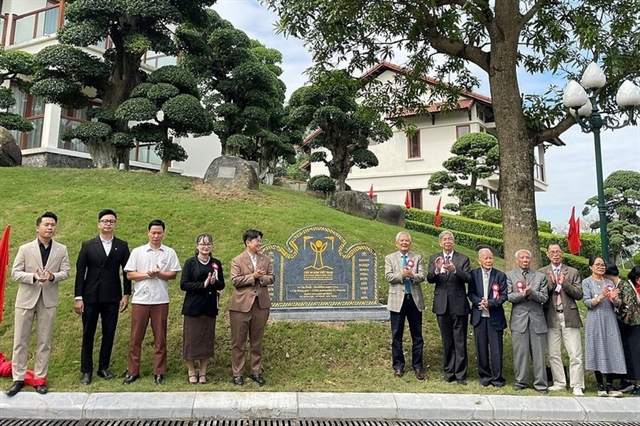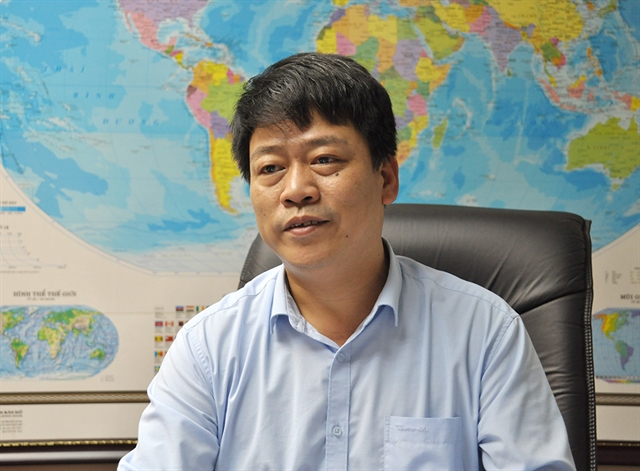 Environment
Environment

Vietnam News Agency spoke with Nguyễn Thượng Hiền, deputy head of the General Department of Environment, to learn more about coordination between localities in treatment of potentially-infectious medical waste.

|
| Nguyễn Thượng Hiền, deputy head of the General Department of Environment |
The Ministry of Natural Resources and Environment has issued several official documents to municipal and provincial People’s Committees to increase treatment of medical waste produced due to COVID-19.
Vietnam News Agency spoke with Nguyễn Thượng Hiền, deputy head of the General Department of Environment, to learn more about coordination between localities in treatment of potentially-infectious waste.
What is the definition of COVID-19-related waste? What is the treatment process? What is the scope of instruction documents issued by the Ministry of Natural Resources and Environment aiming to increase treatment of medical waste?
According to the Ministry of Health, such waste comes from medical and treatment facilities, residential areas under lockdown, usual daily waste, disposed face masks and mouth wipes contaminated with sputum.
Such waste, if coming from people who are SARS-CoV-2 positive, can pose a high risk of infection and must be managed as infectious medical waste and as hazardous waste.
Joint Circular No. 58/2015/TTLT-BYT-BTNMT issued on December 31, 2015 on waste management by the Ministry of Natural Resources and Environment and the Ministry of Health set out clear regulations for normal and infectious medical waste.
Infectious medical waste must be managed as hazardous waste, and has to follow a different treatment process of sorting, storing, collecting, transporting and disposal.
Currently, treatment involves stricter regulations and specialised processes. Waste treatment facilities permitted by the Ministry of Natural Resources and Environment can process several types of medical waste.
Since the early outbreak of COVID-19 in Việt Nam, the Ministry of Natural Resources and Environment and Ministry of Health have been providing consultation to the National Steering Committee to issue instructions regarding waste and environmental-sanitation issues caused by COVID-19.
The Ministry of Natural Resources and Environment also sent out documents guiding localities to increase management of household solid waste, including COVID-related waste.
This applies to every locality so that all follow a common guideline.
The instruction from the Ministry of Natural Resources and Environment is to prioritise on-site medical waste treatment. However, if local capacity is insufficient what is the Ministry’s suggestion?
We can see that not every locality has a treatment plant for hazardous waste, and not all of those facilities can manage medical waste.
Thus, inter-regional and inter-provincial waste treatment is evident. With the current pandemic, medical waste can exceed the treatment capacity of a locality, and will have to be transported to functional units in the nearest neighbouring locality for waste treatment.
The Ministry of Natural Resources and Environment recommends waste treatment in clusters, or transporting waste to authorised hazardous waste treatment facilities whose permits also cover medical waste.
It should be noted that waste relocation should be made at the nearest facilities to avoid long-distance transportation.
This process involves stricter regulations for transporting vehicles, requiring rigorous use of secure specialised equipment to minimise possible risks of infection to the environment and to people’s health.
Current regulations also encourage investing in waste treatment facilities, inter-regional waste treatment, and avoiding scattered investment, which often could not respond to the requirements of environment protection.
As of present, the Ministry of Natural Resources and Environment has given permission to more than 100 hazardous waste treatment facilities, among which 70 per cent are permitted to manage medical waste and are located in different parts of the country.
The process follows strict regulations on collecting, storing, transporting and treatment.
Treatment of infectious medical waste basically involves sterilisation with autoclaves, microwaves, or disposal in incinerators for hazardous waste to ensure radical treatment of possible risks.
The Ministry of Natural Resources and Environment has given approval to several units to proceed with a trial treatment plan for COVID-19-related waste. Could you elaborate on this matter?
According to Circular No. 36/2015/TT-BTNMT issued on June 30, 2015 on hazardous waste management, prior to being granted a permit, hazardous waste treatment facilities need to conduct trial operation over six months to revaluate efficiency of their treatment infrastructure and equipment.
In these six months, if requirements are met, the Ministry of Natural Resources and Environment will organise an inspection team to evaluate and grant permission if standards are fulfilled.
Trial operation is approved for treatment facilities for hazardous waste, including infectious medical waste.
This is considered a temporary authorisation for businesses to collect hazardous waste to reach maximum capacity during their trial, if standards are fulfilled then a permit is issued.
The Ministry of Natural Resources and Environment also develops annual inspection and assessment plans for waste treatment facilities in general, which includes hazardous waste treatment facilities.
During the inspection, assessment and evaluation for permits, any facility that fails to comply with regulations of environment protection will be strictly fined according to the law, or even has their permit revoked, depending on their specific case.
Violated treatment plants will be given strict penalties. Currently, all these facilities are required to install automatic monitoring devices, which constantly transmit data to the Department of Natural Resources and Environment for observation and assessment, and soon to the General Department of Environment.
What are the Ministry’s recommendations to localities and citizens in during the pandemic currently?
We hope people will strictly abide by environmental regulations, including instructions issued by the National Steering Committee on waste management.
As an example, we do not need to use medical masks at all time. In the green zones, we can still practice 5K and use cloth masks instead of one-time-use disposable masks, these can be reused up to 20-30 times.
Although only a small action, this will reduce waste and negative impact on the environment.
In quarantine zones, medical facilities or lockdown areas, it is necessary to properly sort waste at source, and in particular potentially-infectious waste should be disposed according to regulations to avoid mixing household waste with infectious medical waste.
As these two types of waste follow different treatment processes, if they are not sorted, the amount of infectious waste will increase, leading to a surge in cost, collection frequency and transportation.
For localities, the Ministry of Natural Resources and Environment are also issuing instruction documents to better prepare for future developments in the pandemic.
Localities must immediately review waste management plans, especially for medical waste. It is also necessary to forecast developments of the pandemic and assess their actual capacity in waste treatment should the situation get worse in order to make adjustments regarding waste collecting, transporting, storing and treatment.
Localities should coordinate and join hands to share the burden in case any are overloaded with medical waste treatment in their area.
They need to agree for facilities permitted by the Ministry of Natural Resources and Environment to collect, transport and store waste from other localities for treatment, refrain from incohesive practices; coordinate with other provinces; ensure people’s health and safety; and better protect the environment. — VNS




